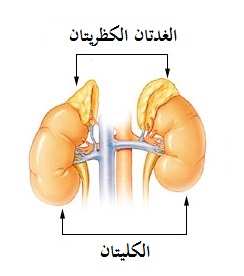Congenital adrenal hyperplasia due to 21-hydroxylase deficiency
(Redirected from 21 hydroxylase deficiency)
Editor-In-Chief: Prab R Tumpati, MD
Obesity, Sleep & Internal medicine
Founder, WikiMD Wellnesspedia &
W8MD medical weight loss NYC and sleep center NYC
| Congenital adrenal hyperplasia due to 21-hydroxylase deficiency | |
|---|---|

| |
| Synonyms | CAH due to 21-hydroxylase deficiency |
| Pronounce | N/A |
| Specialty | N/A |
| Symptoms | Ambiguous genitalia, early puberty, infertility, hirsutism, acne |
| Complications | Adrenal crisis, infertility, hypertension |
| Onset | Neonatal or childhood |
| Duration | Lifelong |
| Types | N/A |
| Causes | Genetic mutation in the CYP21A2 gene |
| Risks | Family history |
| Diagnosis | Newborn screening, blood test for 17-hydroxyprogesterone |
| Differential diagnosis | Androgen insensitivity syndrome, Polycystic ovary syndrome |
| Prevention | None |
| Treatment | Glucocorticoid replacement, mineralocorticoid replacement, surgery for genital abnormalities |
| Medication | Hydrocortisone, fludrocortisone |
| Prognosis | Variable, depends on severity and treatment adherence |
| Frequency | 1 in 15,000 live births |
| Deaths | N/A |
Congenital adrenal hyperplasia due to 21-hydroxylase deficiency (21-OHD CAH) is an autosomal recessive genetic disorder affecting the adrenal glands. It is the most common form of congenital adrenal hyperplasia, accounting for approximately 95% of cases.
Introduction[edit | edit source]
21-OHD CAH is caused by mutations in the CYP21A2 gene, which encodes the enzyme 21-hydroxylase. This enzyme is crucial for the production of cortisol and aldosterone, two important hormones produced by the adrenal glands. When 21-hydroxylase is deficient, the body cannot produce these hormones in sufficient amounts, leading to a variety of symptoms.
Symptoms[edit | edit source]
Symptoms of 21-OHD CAH can vary widely, depending on the severity of the enzyme deficiency. In severe cases, symptoms may appear in infancy or early childhood and can include salt-wasting crisis, virilization in girls, and early puberty in both sexes. In milder cases, symptoms may not appear until adolescence or adulthood and can include irregular menstruation, acne, and infertility.
Diagnosis[edit | edit source]
Diagnosis of 21-OHD CAH is typically made through blood tests to measure levels of hormones produced by the adrenal glands. Genetic testing can also be used to confirm the diagnosis and identify the specific mutation in the CYP21A2 gene.
Treatment[edit | edit source]
Treatment for 21-OHD CAH typically involves lifelong hormone replacement therapy to replace the deficient hormones. In some cases, surgery may be required to correct physical abnormalities.
See also[edit | edit source]
Transform your life with W8MD's budget GLP1 injections from $125
W8MD offers a medical weight loss program NYC and a clinic to lose weight in Philadelphia. Our W8MD's physician supervised medical weight loss centers in NYC provides expert medical guidance, and offers telemedicine options for convenience.
Why choose W8MD?
- Comprehensive care with FDA-approved weight loss medications including:
- loss injections in NYC both generic and brand names:
- weight loss medications including Phentermine, Qsymia, Diethylpropion etc.
- Accept most insurances for visits or discounted self pay cost.
- Generic weight loss injections starting from just $125.00 for the starting dose
- In person weight loss NYC and telemedicine medical weight loss options in New York city available
- Budget GLP1 weight loss injections in NYC starting from $125.00 biweekly with insurance!
Book Your Appointment
Start your NYC weight loss journey today at our NYC medical weight loss, and Philadelphia medical weight loss Call (718)946-5500 for NY and 215 676 2334 for PA
Search WikiMD
Ad.Tired of being Overweight? Try W8MD's NYC physician weight loss.
Semaglutide (Ozempic / Wegovy and Tirzepatide (Mounjaro / Zepbound) available. Call 718 946 5500.
Advertise on WikiMD
|
WikiMD's Wellness Encyclopedia |
| Let Food Be Thy Medicine Medicine Thy Food - Hippocrates |
Translate this page: - East Asian
中文,
日本,
한국어,
South Asian
हिन्दी,
தமிழ்,
తెలుగు,
Urdu,
ಕನ್ನಡ,
Southeast Asian
Indonesian,
Vietnamese,
Thai,
မြန်မာဘာသာ,
বাংলা
European
español,
Deutsch,
français,
Greek,
português do Brasil,
polski,
română,
русский,
Nederlands,
norsk,
svenska,
suomi,
Italian
Middle Eastern & African
عربى,
Turkish,
Persian,
Hebrew,
Afrikaans,
isiZulu,
Kiswahili,
Other
Bulgarian,
Hungarian,
Czech,
Swedish,
മലയാളം,
मराठी,
ਪੰਜਾਬੀ,
ગુજરાતી,
Portuguese,
Ukrainian
Medical Disclaimer: WikiMD is not a substitute for professional medical advice. The information on WikiMD is provided as an information resource only, may be incorrect, outdated or misleading, and is not to be used or relied on for any diagnostic or treatment purposes. Please consult your health care provider before making any healthcare decisions or for guidance about a specific medical condition. WikiMD expressly disclaims responsibility, and shall have no liability, for any damages, loss, injury, or liability whatsoever suffered as a result of your reliance on the information contained in this site. By visiting this site you agree to the foregoing terms and conditions, which may from time to time be changed or supplemented by WikiMD. If you do not agree to the foregoing terms and conditions, you should not enter or use this site. See full disclaimer.
Credits:Most images are courtesy of Wikimedia commons, and templates, categories Wikipedia, licensed under CC BY SA or similar.
Contributors: Prab R. Tumpati, MD




